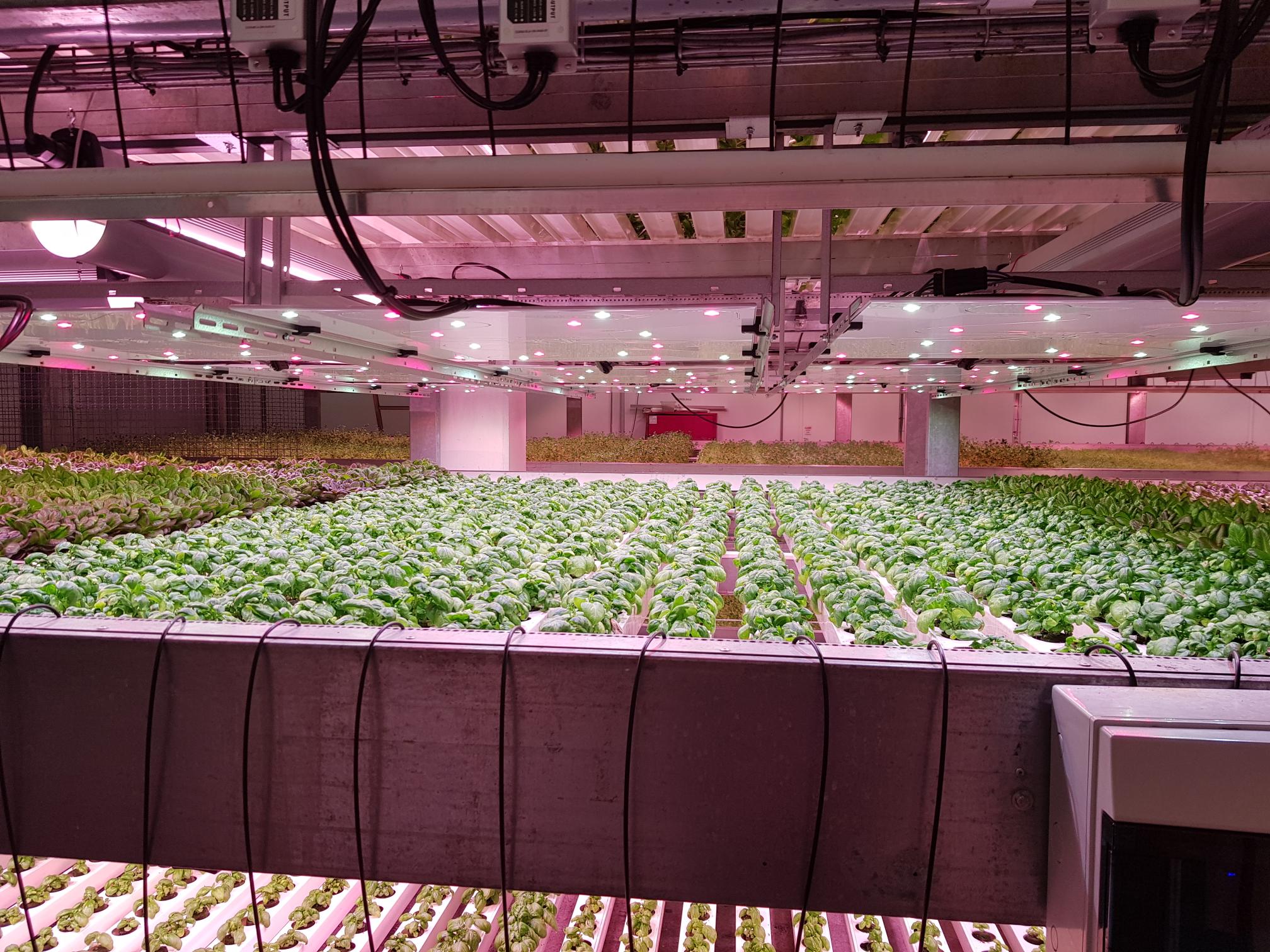In the world of hydroponic cultivation, especially for leafy greens like (lettuce and herbs), few things are as critical to success as water management. Whether you’re operating an existing facility or planning a new one, ensuring the health and quality of your irrigation water is non-negotiable.
After all, in hydroponics, water isn’t just a carrier of nutrients; it is the growing environment. Its purity, oxygenation, and balance directly affect plant development, root health, and overall crop performance.
Over the years, we have visited many hydroponic sites struggling with water-related issues. Particularly during the warmer months, elevated temperatures and radiation levels cause oxygen to drop while algae and biofilm thrive. This creates a storm for root zone problems that can quickly spiral out of control if not addressed.
Thankfully, the industry has evolved. Various technologies are now available to help growers manage and disinfect their water more effectively, giving them the tools to maintain consistent, clean, and healthy irrigation throughout the year, even during peak summer stress.
We believe that knowledge is the foundation of long-term success in the CEA sector. That’s why we’re sharing a new article series highlighting the core pillars of successful leafy greens cultivation, starting with this article focusing on “water management.”
Water Input
Everything begins with understanding the origin of your water. If you’re collecting rainwater, the focus should be on disinfecting storage basins to prevent the buildup of harmful microorganisms. Algae, biofilm, bacteria, viruses, fungi, and even microscopic pests like nematodes can thrive in stored water unless actively managed. Technologies like ultrasonic transmitters have proven to be effective solutions here.
If you rely on well or municipal water, then the priority shifts to water testing. A detailed analysis will reveal whether the basic parameters, sodium, chloride, and bicarbonate levels, fall within acceptable ranges for hydroponic lettuce and herb production. Without this step, any fertigation plan you create is built on unstable ground.
Clean Water In, Clean Water Out
Once water enters the system, it must undergo a proper filtration process. The first stage is pre-filtration, which removes large debris and suspended solids that could clog lines or damage sensitive equipment. Sand filters or automated self-cleaning filters (SAF systems) are particularly effective for this, capturing particles as small as 20–50 microns without requiring manual maintenance.
After these larger impurities are removed, the water is ready for disinfection. UV-C treatment is one of the most common and effective methods. This chemical-free process involves passing the water through a chamber where ultraviolet light neutralizes bacteria, viruses, and fungi by disrupting their DNA. It’s safe and efficient and helps maintain nutrient stability in your solution.
Advanced Treatments for Better Results
Beyond basic filtration and UV, several advanced methods are gaining popularity for the added protection they offer.
Ozone (O₃) treatment is one such method. Ozone acts as a powerful oxidizing agent, eliminating pathogens and breaking down organic contaminants. Importantly, it doesn’t leave behind any toxic residue; ozone naturally converts back into oxygen, making it an environmentally responsible choice.
Another powerful tool is nanobubble technology. These microscopic bubbles, smaller than 200 nanometers, enhance dissolved oxygen levels in irrigation water. This has multiple benefits: stronger root systems, improved nutrient absorption, reduced disease pressure, and a significant decrease in biofilm buildup. Especially in hot weather, maintaining oxygen levels between 15 and 20 ppm can make a great difference in crop quality and consistency.
Some growers also use hydrogen peroxide (H₂O₂) as an additional cleaning method. It’s relatively affordable and easy to apply, either directly into irrigation water or via stock tanks. H₂O₂ breaks down into water and oxygen while oxidizing pathogens and organic material. Just make sure to keep concentrations below 20 ppm to avoid damaging sensitive roots systems like lettuce.
Don’t Forget the Temperature
One final yet often overlooked aspect is irrigation water temperature. Especially in summer, hot water can be a hidden stressor. Not only does it lower dissolved oxygen levels, but it also promotes the growth of algae and biofilm. We’ve seen clear evidence that leafy greens perform better when water is delivered a few degrees cooler than ambient temperatures, ideally about 3–4°C lower.
Hydroponic systems live or die by the quality of their water. Fortunately, modern growers have access to a range of technologies to ensure their irrigation systems stay clean, oxygenated, and pathogen-free. From filtration to UV, ozone, nanobubbles, and even temperature control, today’s best practices offer comprehensive protection for year-round production.
At Agranom, we’re committed to supporting your journey through innovative technology and reliable expertise. Whether you’re already growing or just getting started, we’re here to help you build a system that thrives.
Visit our website to learn more, or reach out to us directly if you have any questions.
We are “Your Leafy Greens Specialist”.
Source: https://wikifarmer.com/library/en/article/water-management-for-hydroponic-leafy-greens



